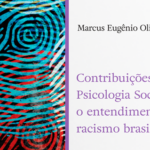Jiaqi Liu, School of International Studies, Zhejiang University, Hangzhou, China
The structural logic of the paper The influence of civilizations in the 15-20th centuries on Asian languages and its linguistic and philosophical implications begins with a study of the distribution of Asian languages in a particular historical period. It then moves on to the development of language borrowing and integration as influenced by civilizational exchanges, and concludes with the continuing development of regional languages in historical civilizations. This logical progression is both logical and clear, providing a comprehensive framework for understanding the complex dynamics of change.
The distribution of Asian languages by geographic region is the basis for discussing their development. Cultural exchanges and historical integration within the Asian region have had a significant impact on Asian languages. There are significant differences between Western and Asian civilizations, especially in terms of language development and cultural integration. The development of seafaring technology facilitated the spread of Western civilization to Asia, which in turn influenced the distribution of Asian languages and cultures at specific historical periods.
To fully understand this influence, it is important to introduce key representatives of Western civilization, such as religious ideas, technological advances, and philosophical thought. Understanding these elements provides a context for how Western civilization influenced the development of Asian languages. It is also crucial to emphasize the commonalities and differences in the development of Asian languages. Asian languages are so diverse and distinctive that it is impossible to categorize them in a uniform and therefore comparable manner.
The second part of the analysis focuses on language borrowing and switching, emphasizing the integration of languages in the clash of civilizations. Language borrowing includes not only cultural exchanges, but also religious beliefs, philosophical concepts, national cultures and material production methods. To solve this problem thoroughly, it is necessary to study in depth the historical background of language borrowing, the process of conversion and the results of statistical analysis.
Identifying common features of different language transformations is challenging, as is using valid data to support these findings. Language exchange is a time process and a result of historical change. Therefore, explaining the borrowing process of Asian languages requires a series of historical nodes or nodes of linguistic features that are consistent with developmental patterns. For example, the spread of Buddhism from India to China led to the borrowing of many Sanskrit words into Chinese, influencing religious and philosophical texts.

Image: congerdesign via Pixabay.
In analyzing the continuous development of Asian languages, we can find that national culture is the basis for regional languages to resist the influence of foreign civilizations. However, the large number of ethnic groups in Asia and their varying levels of development make it more complicated to clarify the role of national culture in language development. For example, the ability of Chinese to resist the influence of Western languages can be attributed to China’s strong sense of national and cultural identity, which has preserved its linguistic heritage.
In addition, an introduction to the relationship between Western civilization and national culture is crucial to understanding linguistic trends. Currently, the article is not comprehensive in illustrating the state of languages, only in terms of the languages published in academic journals. It should also include the scope of language use, population size, and economic power. For example, the popularity of English in academic journals reflects not only cultural influence but also economic and political power.
To illustrate these points, consider specific case studies and historical contexts. During the colonial period, British influence in India led to the widespread use of English, which remains the primary language of education, government, and business today. Similarly, the spread of Chinese culture through the Silk Road facilitated language exchange between China and Central Asia, enriching the vocabulary and expressions of languages along the trade route.
Another example is the influence of Arabic during the Islamic Golden Age. The spread of Islam in Asia brought elements of Arabic into the languages of different regions, especially in scientific, mathematical and philosophical texts. This linguistic borrowing facilitated the exchange of knowledge and ideas between cultures and contributed to the development of a common intellectual heritage.
Despite these historical examples, the process of language integration faces a number of challenges. The diversity of languages in Asia means that each language has its own unique trajectory. For example, the impact of Western civilization on Japanese differs from that on Korean due to differences in historical interactions, cultural resilience and linguistic structures.
In addition, the role of language policy and education cannot be ignored. Government policies on language education and preservation play a crucial role in the development and survival of regional languages. For example, in order to promote cross-regional communication, China promoted Putonghua as an official language. In the process, regional dialects and minority languages have been impacted, resulting in a series of changes, and even some dialects with a small number of speakers are on the verge of extinction. Realizing this problem, China has actively introduced language protection policies to effectively curb this trend.
In conclusion, the development of Asian languages is a complex process influenced by a variety of factors, including cultural exchanges, historical integration and the influence of Western civilization. The structural logic of this paper, from the geographical distribution of languages to the analysis of language borrowing and ongoing development, provides a clear and comprehensive framework for understanding these dynamic changes. By examining specific historical contexts and case studies, we gain a deeper understanding of the intricate interplay between language and civilization, highlighting the resilience and adaptability of regional languages amidst the forces of change.
Understanding the development of Asian languages requires a multidisciplinary approach that takes into account historical, cultural and socio-political factors (He; Dai, 2007, p. 28-47). It is only through such a comprehensive analysis that we will be able to understand the richness and diversity of Asia’s linguistic heritage and the continuing impact of global civilization on its evolution.
To read the article, access
LIU, J. The influence of civilizations in the 15-20th centuries on Asian languages and its linguistic and philosophical implications. Trans/Form/Ação [online]. 2024, vol 47, no. 6, e02400249 [viewed 23 October 2024]. https://doi.org/10.1590/0101-3173.2024.v47.n5.e02400249. Available from: https://www.scielo.br/j/trans/a/JGGYhqwvMmwn5TTCVmbKq8B
Reference
HE, X.B. and DAI, D.F. On the Method of Defining the Status of Language. Journal of Guangdong Polytechnic Normal University. 2007, no. 06, pp. 28-47.
External links
Trans/Form/Ação – TRANS: https://www.scielo.br/trans/
Trans/Form/Ação – Journal: Instagram | Facebook | Academia.edu
About Jiaqi Liu
Jiaqi Liu. School of International Studies, Zhejiang University. Research direction: Language, Philosophy, Education.
Como citar este post [ISO 690/2010]:

















Recent Comments